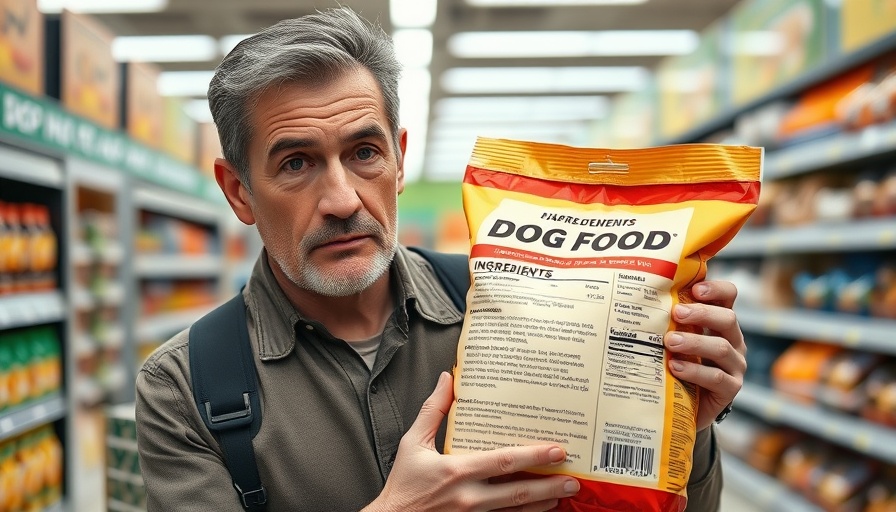
Understanding the Ingredients: Are You Feeding Your Dog Toxic Waste?
Many pet owners are unaware of the hidden dangers lurking in commercially available dog food. Hidden beneath the appealing packaging and catchy marketing lies a plethora of harmful ingredients sourced from less-than-ideal industries. As health-conscious families, understanding these ingredients can help us make informed choices for our pets' well-being.
In 'The Worst Dog Food in the World,' the discussion dives into the alarming ingredients in common dog foods, exploring key insights that sparked deeper analysis on our end.
Identifying the Red Flags in Dog Food Labels
To protect our furry friends from potentially life-threatening health issues, let's break down some common red flags found in dog food labels. The first ingredient often dictates the majority of what's included — and it's shocking to find ground whole grain corn listed as the primary component in many brands. This type of corn is often not sweet corn that we consume; instead, it is cheap, GMO corn laden with pesticides like glyphosate, which can lead to serious health issues like liver cancer.
Understanding the Setbacks of Grain-Based Diets
Grains (especially corn) act as hidden sugars, spiking our dogs' blood sugar levels and leading to health crises such as obesity and diabetes. Much like cattle that are fattened up on a grain-heavy diet, dogs shouldn't be fed processed corn materials. What happens to dogs when they consume these refined starches? They can suffer from metabolic problems that lead to a myriad of health complications.
The Malicious Mystery of Meat Byproducts
Another alarming staple in many dog foods is meat and bone meal. Posing as a source of protein, it often comes from "the four D's": dead, dying, diseased, or disabled animals. The lack of transparency in the sourcing of these components can have devastating consequences for our pets' health. Ingredients can include everything from roadkill to euthanized pets, with no oversight on quality or safety.
Why Processed Proteins Are a Problem Too
Alongside meat byproduct meals, soy-based products, particularly GMO soy, are often included as protein sources. Processing methods leave these soy proteins void of essential nutrients, while adding potentially harmful chemicals to the mix, triggering endocrine disruption and adverse effects on reproductive health in dogs.
Red Flags in Fat Content
Parents need to pay particular attention to the fat content in dog food. When labeled as "animal fat," it can include highly processed, oxidized fats derived from various sources, including restaurant waste. These poor-quality fats can cause inflammation and other health issues in pets.
Artificial Additives: What You Should Know
Lastly, it's critical to consider the use of artificial colors and preservatives. Ingredients like Red 40 or BHA may beautify the packaging but bring no nutritional value. Moreover, they may pose health risks, including neurological problems or even cancer — and many of these ingredients are banned in other countries.
Choosing Better Options for Your Furry Friends
So, how can pet owners make smarter food choices? Start by looking for brands that prioritize high-quality, sustainable ingredients free of harmful additives. For example, opting for dog food that includes whole foods such as fresh vegetables, quality meats (like fish or chicken), and no artificial colors or preservatives is the best choice. It's vital to familiarize yourself with ingredient labels and prioritize foods containing high-quality protein and whole grains that are safe for your pets.
Final Thoughts on Dog Food Safety
Being informed about dog food ingredients is crucial for pet owners. Knowing what goes into your dog's food can influence their health outcomes significantly. Take charge of your dog’s diet to ensure they lead a happy and healthy life, free from the hidden dangers of poor-quality food products.
 Add Row
Add Row  Add
Add 




Write A Comment